The Key Principles Every Runner Should Know About Strength Training
In working with some of the top runners in the world, I have found that there is one thing they all need for their next break through…consistent strength training for runners! It can be challenging to convince runners that there are other ways to get better at running than more miles, but results speak for themselves. No matter if a runner is looking for a first time or a first place finish, strength training plays a key role.
Let’s start with the pitch that I give my runners when convincing them to start lifting weights, and then let’s dive into key concepts and the biggest mistakes that runners should avoid. There is a lot of misinformation when it comes to weight training, and it is more important to understand why and how to lift weights than it is to find a strength training program with the most Instagram worthy exercises. (we have a plan for you at the bottom!)
Why strength training for runners?
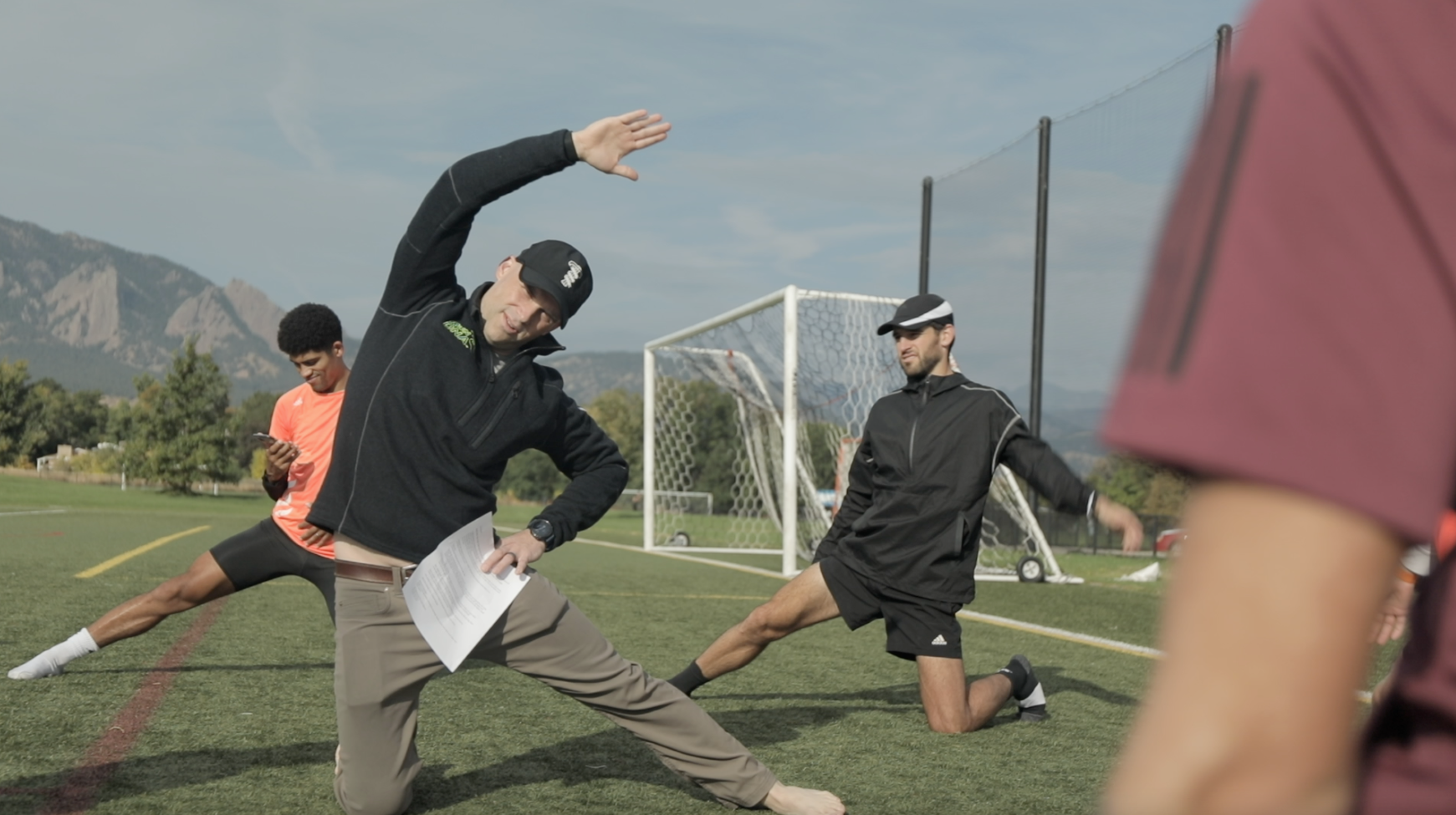
When I first start working with a runner, professional athlete or not, we talk about their preferences and beliefs about weight training. I have heard it all, so let’s clear the air about a few things first. When done correctly, weight training will not make you bulk up. It takes body builders hours in the gym, months of consistency, and tons of calories to start seeing muscle mass increases. Here is how I explain the reason all runners should do strength training.
“Running alone doesn’t lead to stronger leg muscles or significant gains in major muscle groups. While it enhances efficiency, it doesn’t necessarily build strength. Our body uses the smallest/weakest muscle fibers first and gradually increases the number and size of muscle fibers it needs to accomplish a task as it progressively gets harder. Running does not create a high enough load for a long enough time to stimulate the body to recruit these fibers and thus does not increase strength. When we lift heavy weights with lower reps, our muscles must recruit those bigger/stronger fibers. This makes the muscles we have stronger and teaches our body how to recruit more fibers, allowing our body to be more efficient at running because we use more muscle fibers available that are working at a lower percentage of their maximal strength. Incorporating strength training exercises, especially those that target connective tissues and engage the body in a full body workout, can complement running to improve overall strength.”
If a runners is very interested, I also go into how weight training plays a role in running economy. Many runners have heard how running economy is similar to miles per gallon in a car, but few realize that strength training can significantly increase running economy. If two runners with the same VO2 max ran a race, 65% of the variance in performance could be explained by running economy.
Strength training and your heart
Did you know that strength training can significantly benefit your aerobic fitness? Studies have shown that engaging in a full body workout that includes upper body and lower body exercises can train your heart, enhancing cardiovascular efficiency, which is essential for training for runners. Just because it is not running does not mean that there are not direct benefits for running performance!
Strength training and injury prevention
Our body’s ability to maintain muscle imbalances in check relies on both static and dynamic stability, underlining the importance of cross training.
- Static stability includes things like ligaments and bones that help to absorb forces and maintain postures.
- Dynamic structures include muscles and tendons that respond to the stresses we place on the body.
Strength training sessions, particularly those involving body weight exercises and medicine ball workouts, play a pivotal role in injury prevention by bolstering dynamic stability and enhancing the connective tissues’ resilience.
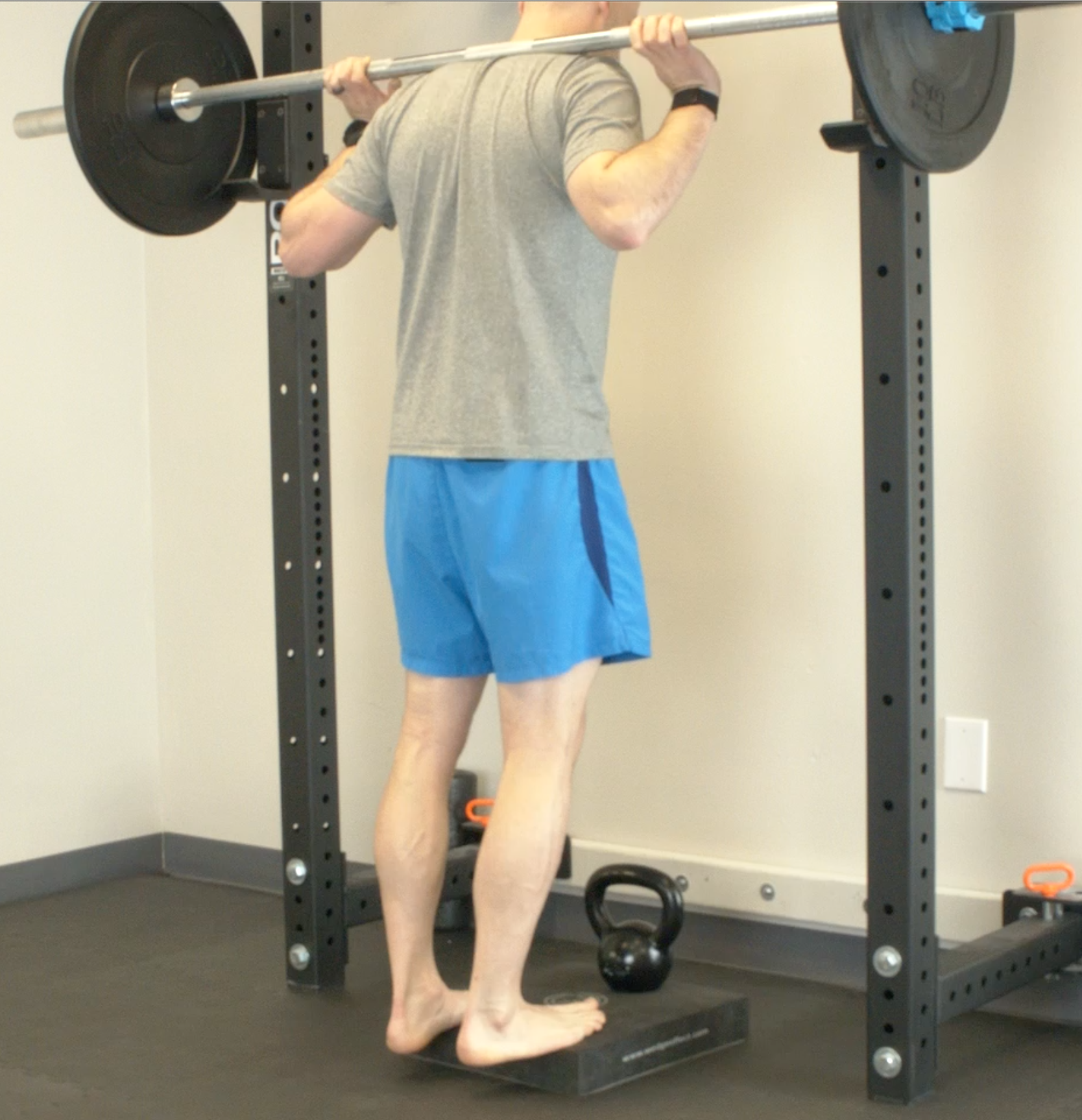
Certain studies can also support the role of resistance training for injury prevention. Having a smaller calf size can place a runner at a four times increase of experiencing tibial stress fracture. The Glutes and TFL provide tension in the IT-Band that is essential to avoid bending of the femur that could cause a stress response. The benefits of weight training for runners far exceeds running performance and play a significant role in staying healthy.
Key principles to start strength training
While many runners understand the importance of strength training for runners, figuring out how to effectively incorporate strength training into their regimen can be daunting. Guidance on beginning with two or three sessions a week, focusing on major muscle groups through lower body and upper body exercises, is crucial for a balanced strength training routine.
Here are some key principles and theories that can assist runners add strength training in a safe and effective way.
Training load
All forms of stress, whether from a long run or a strength training session, are processed similarly by our bodies. This is why we use a method like session RPE at RunDNA, which helps us gauge the intensity of a workout, whether it’s part of a strength training routine or cross training effort, including core workouts and plyometrics. It turns out that our brain is very good at interpreting all of the internal and external factors that affect how hard a workout is.
By using “rate of perceived effort” (AKA RPE, see scale below) and using the duration of the workout, we can assign a score for each activity. When it comes to strength training for runners it is very helpful to be able to quantify the additional work being done by the athlete to know total stress on the body.
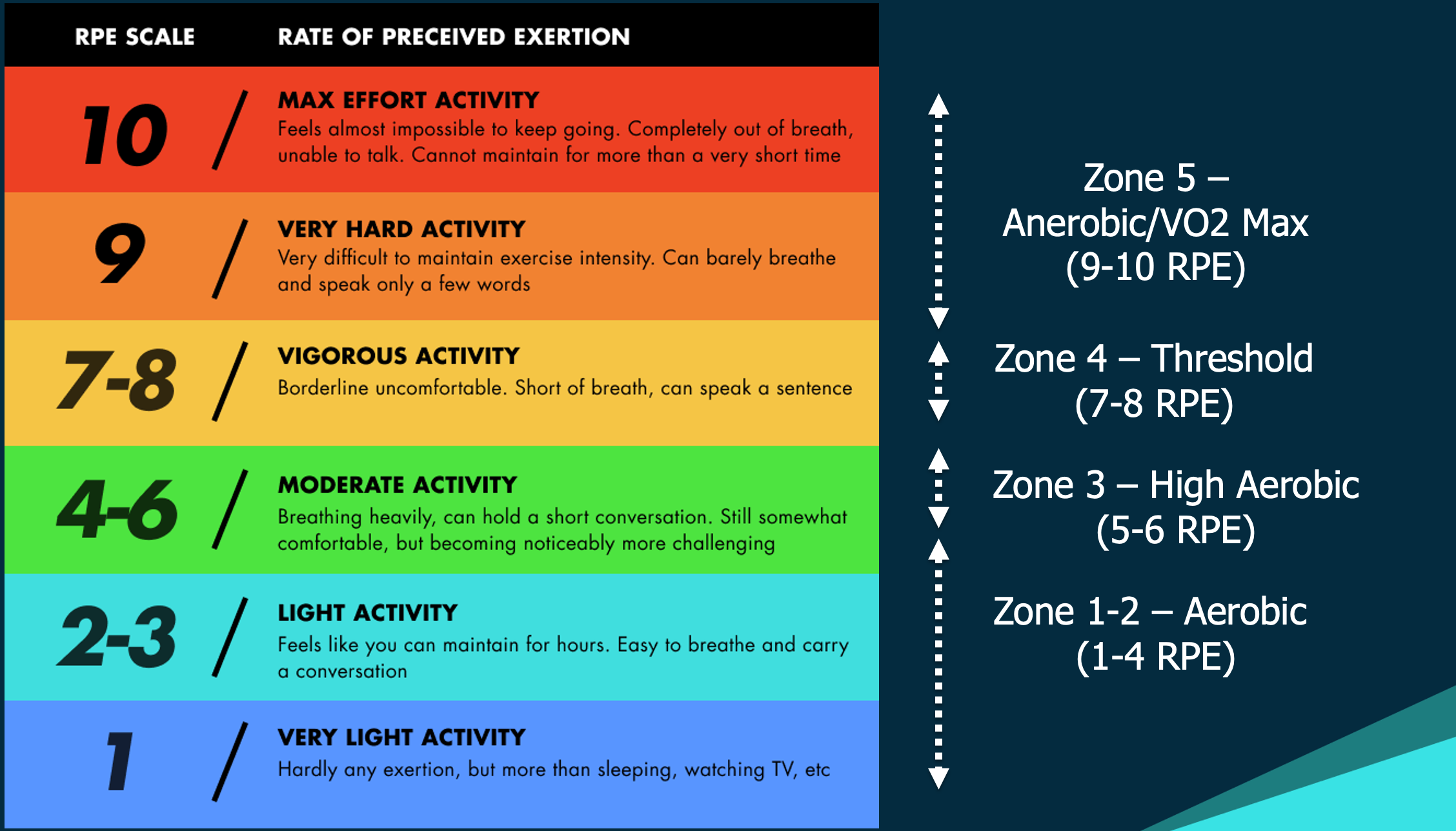
An additional benefit of giving a score to each workout is that we can track progression over time. Research from running and other sports uses session RPE to track Acute to Chronic Workload Ratios. If you have heard about the 10% rule in the past for progressing runs, forget about it! If you progressed 10% a week for 12 weeks you would be doing 2.5x as much as when you started. Acute to Chronic Workload Ratios (ACWR) give an idea of what you have acutely done (~past 7 days) compared to what your body is chronically used to ( past 4 weeks). There is a sweet spot for ACWR to be between 80%-130% to avoid injuries.
We use ACWR is to help prescribe training, but also for the runner to know how much they should listen to their body. If the ratio is high (130% or above) and a runner is having some aches or pains, then the runner may want to modify intensity or duration of that workout. These numbers are not absolute values to say that if you get over 130% that you need to rest, but serve as a gentle nudge to help you decide what is best for staying healthy/consistent while running. The RunDNA App will track this number for you and display it on your dashboard so that you and your coach can see it. For strength training, using session RPE will let a runner who is just starting to lift weights how much additional stress is on their body.
Proper form
Runners are often worried about getting hurt while doing strength training. If a runner gets injured from lifting weights, it is most likely that they don’t have proper form, or they were not ready for heavy weights.
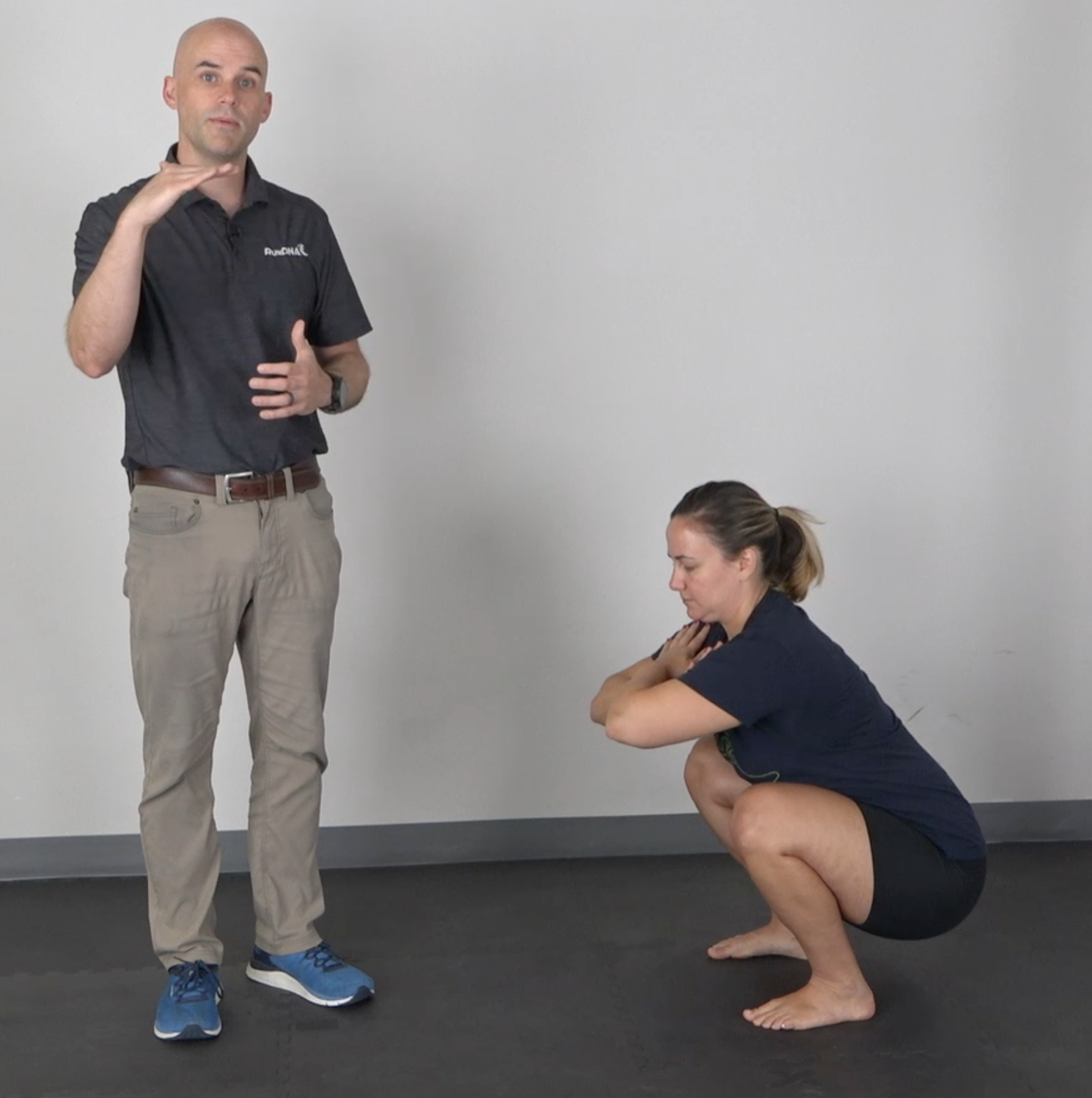
I highly recommend that a runner work with a personal trainer or other qualified professional to make sure they are doing the lifts correctly. I am a big advocate for heavy weights with runners, but I always preface that with good form being essential before lifting heavy. Runners may want to start with less complicated exercises or go through partial motions if they are not maintaining proper form.
I also typically suggest that a runner start with about 50% of what weight they think they can do on their first weight lifting session. You can always do more next time, but you cannot do less than you did – and it may be surprising with how sore it can make you.
Sets, reps, weights
The sets, reps, and weights chosen in your strength training for runners program should be strategically selected to trigger the desired adaptive response. Runners traditionally were told to do 3 sets of 12-15 reps for muscular endurance. This offers very little additional value beyond the muscular endurance gained from actually running. This is a bit of an oversimplification, but below are sets and reps for the three main goals of strength training:
- Strength: 1 to 6 reps
- Muscle Size (hypertrophy): 8 to 15 reps
- Muscular Endurance: 15+ reps
Whether aiming for strength, muscle size (hypertrophy), or muscular endurance, incorporating exercises like single leg deadlifts and single leg squats can target muscle imbalances and strengthen the major muscle groups crucial for running.
When you select a weight to use for strength training, it is a bit of an educated guess. I start by using a term called Reps in Reserve, and then verify how much weight by using Soreness Rules.
Reps in reserve (RIR) is similar to session RPE from our training load discussion because we are using our perception of the effort to determine what weight to use. This method also accounts for variability across sessions if you are sore or tired from other workouts. RIR basically means how many extra reps could you do before muscle failure. Based on the desired result from strength training, you will use different RIR values. For example, if you want to gain strength you may prescribe 4 sets of 6 reps with 1-2 RIR. How close we get to muscle failure and the time under tension plays a big role in the adaptation our body has. Below is a chart with some basic rep ranges and RIR values based on the goal of the strength training session.
Soreness
Soreness provides excellent feedback about if you selected the appropriate sets, reps, and weights. Soreness should follow the Goldilocks principle. It needs to be just right! If there is no soreness after weight lifting, the load may not be enough to get the desired response. Too much soreness will limit the ability to perform the exercises frequently enough to maximize gains.
The soreness rules below are adapted from an article I published on ACL rehabilitation and return to play. To simplify it even more, I like my athletes to have some soreness but not for longer than 24 hours after a lifting session.
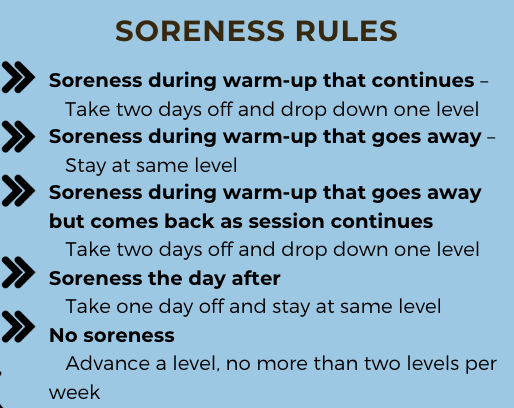
Periodization
While I highly encourage runners to lift heavy weights, it is important to mention that runners should not do that all year long. Just like runners periodize their run training, they should also periodize their weight lifting.
If you are not familiar with periodization, it basically means that you have different focus and priority based on the time of year and proximity to your most important event. It is beyond the scope of this article to go into detail about periodization, but the take away is that when it comes to lifting weights you should vary the type of resistance training throughout the year.
Below is an example of periodization that we explain more in our Endurance Coaching Course. Strength training is an important part of any training plan, but the reality is that weight lifting can cause soreness and lower performance. Runners should match the goal of their strength training with the time it takes for adaptation to maximize gains and for allowing max performance with run specific training.
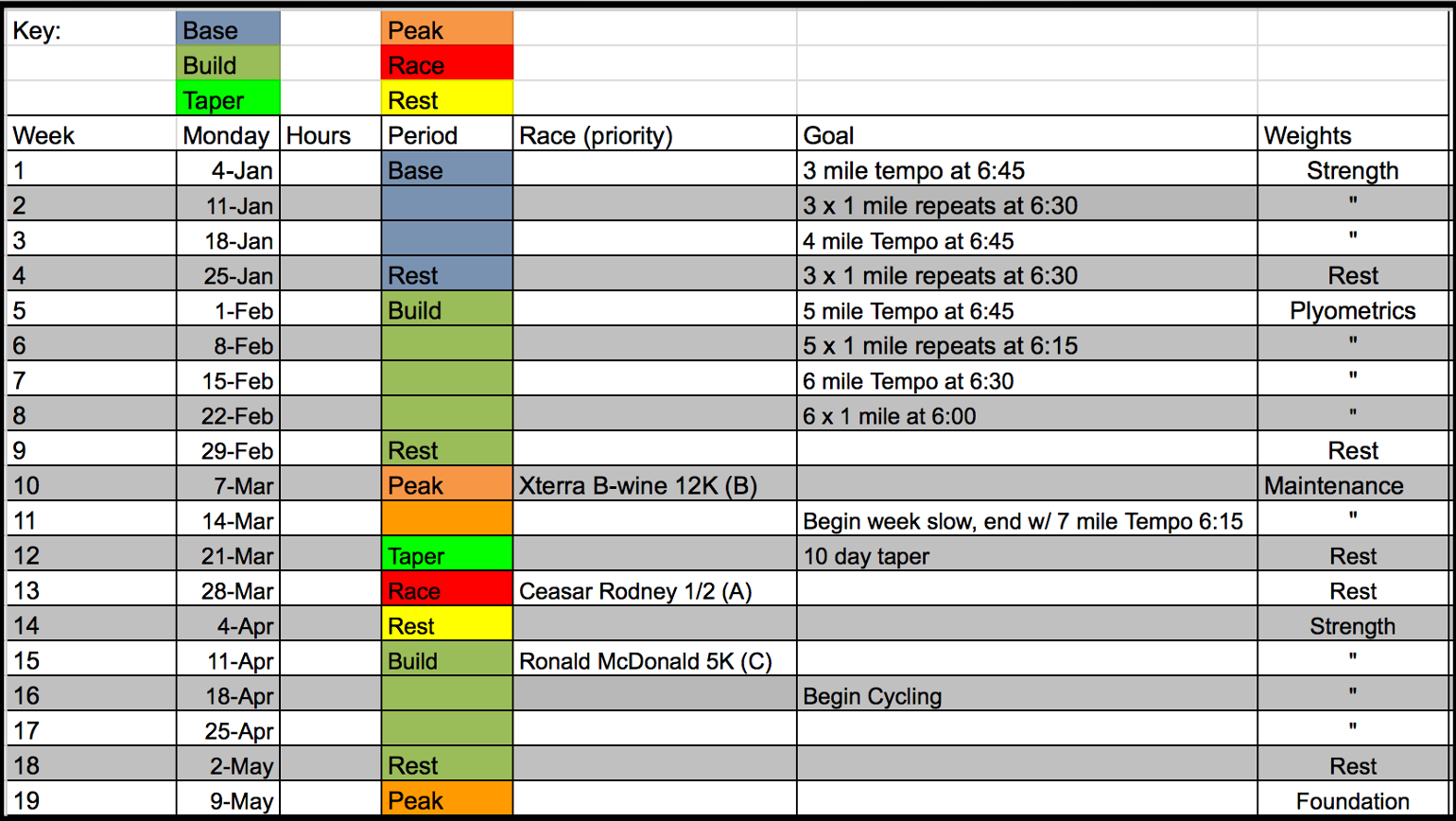
An example of using periodization for run training AND strength training would be that during a base period in running training (lower intensity but higher duration) a runner would focus on heavy strength training. Since the runner would not be doing high intensity running session, any residual fatigue or soreness after heavy strength training would not impact run performance as significantly. Our Endurance Coaching course covers this extensively for those interested, but the take away here is to plan out the type of strength training to compliment your run training and not just do the same type of workout all year long.
Plyometrics
No strength training routine for runners is complete without incorporating plyometrics.

These dynamic exercises, including single leg hops and straight line jumps, are fundamental for improving neuromuscular coordination and strengthening connective tissues, crucial aspects for enhancing running performance and preventing injuries.
One of our favorite exercises for someone new to jumping is to start with is what I call a depth squat. Check out the video below to see how to introduce a faster rate of force production without the impact.
Here are two quick things when adding jumping. Prescribing jumping is typically done by foot contacts. A foot contact is each time the foot would hit the ground. Early plyometrics should be 50-65 foot contacts and progress to no higher than 150 foot contacts.
Second, don’t forget about jumping rope. This is a great warm up before track sessions to prime the body and get the heart flowing, while developing stiffness/spring in the foot.
Example plan
Below is an example plan that runners can use to start lifting weights. This plan is designed for doing in a gym and ideally the runner would have moderate experience lifting weights. As always, proper form is key and start off with light weights.
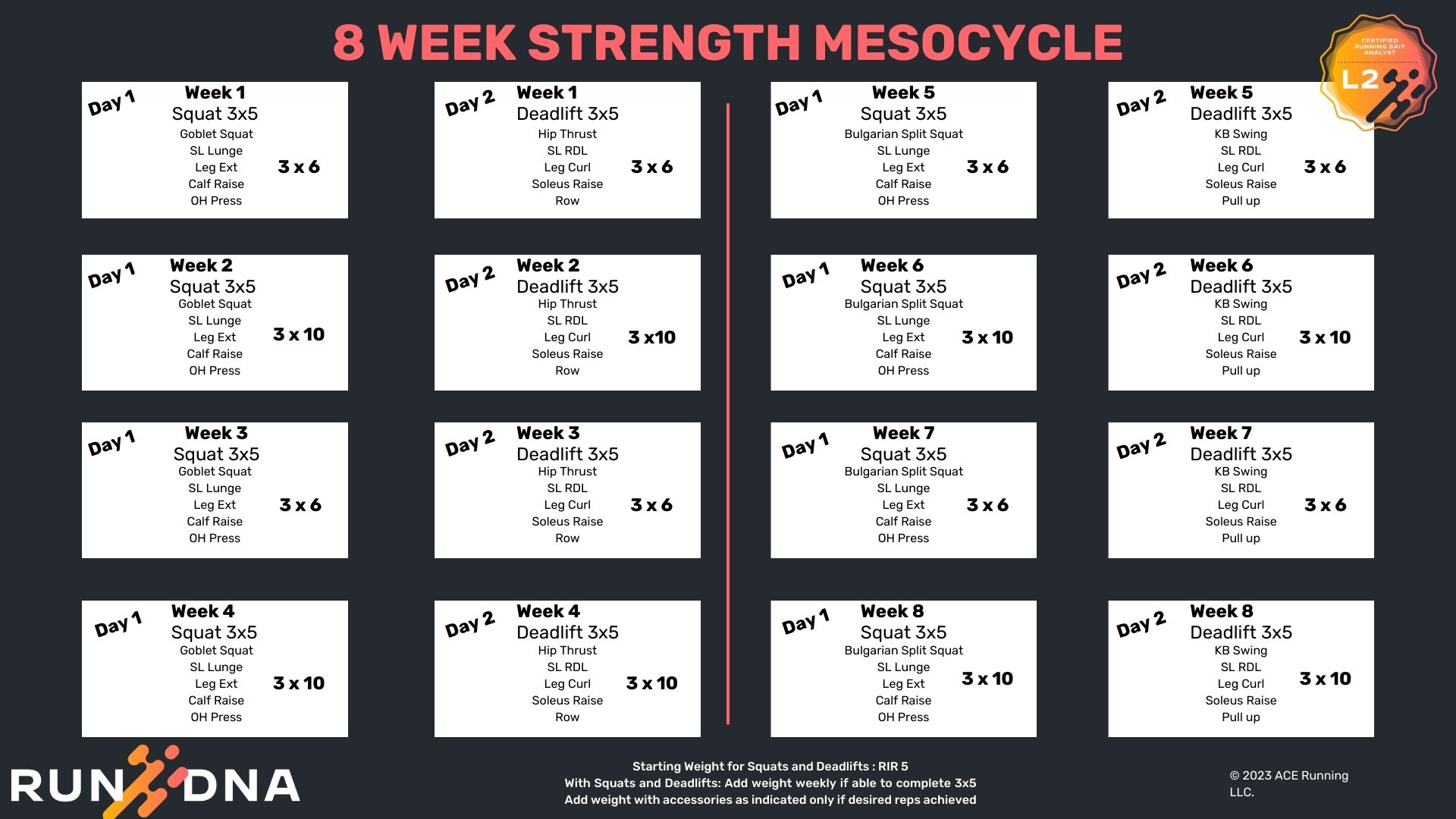
Summary
Hopefully this article is convincing to add strength training for runners. I am a big fan of “minimal effective dose,” so don’t be intimidated by having to spend hours in the gym. A little bit goes a long way!
